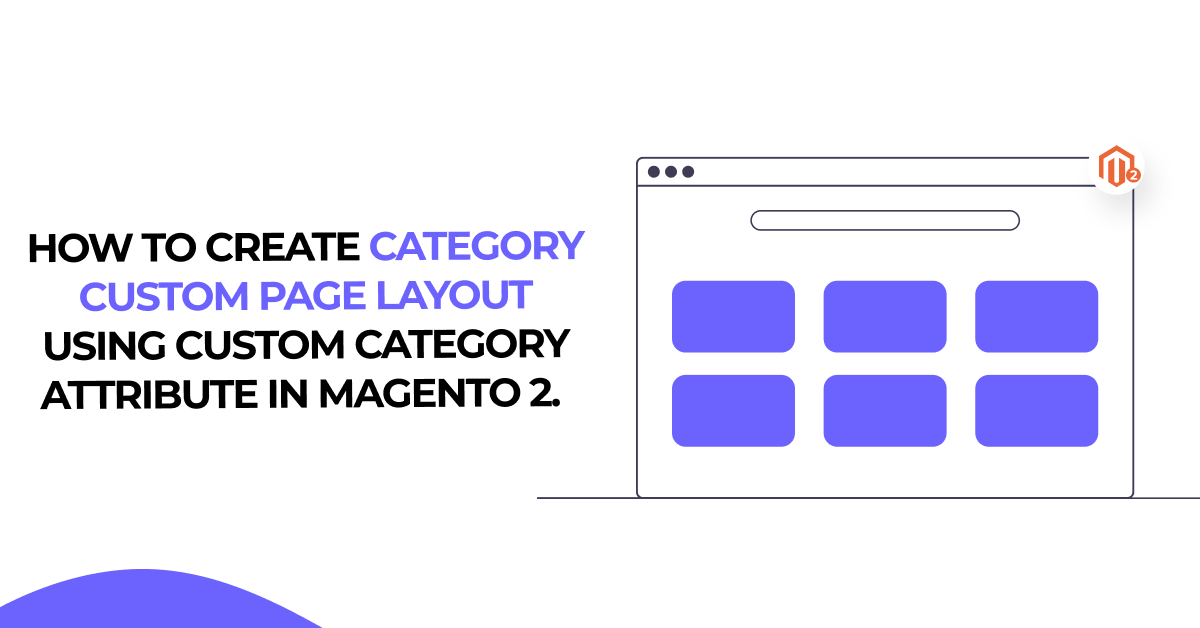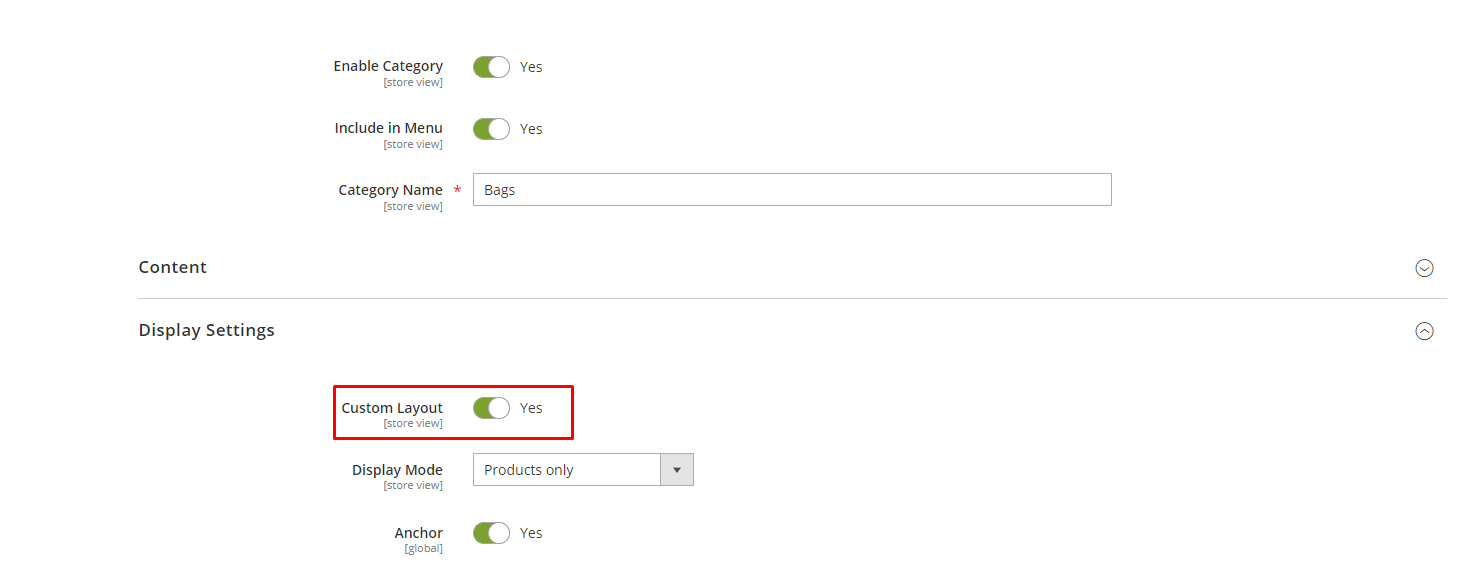How to create Category Page Layout in Magento.

In this article. we will create a new category page layout and use that layout using the custom category attributes in Magento.
To begin with, why would you need to add a custom layout to a category? You may need to accomplish one of the following:
- customize some CSS for that specific type of page
- insert more page information (like blocks and containers via layout)
- Add some custom JS to the page, such as tracking scripts and tracking pixels.
We’ll utilize events and observers to add a custom layout to the category page — it’s only one technique to extend Magento 2 capability. and we’ll use the layout_load_before because there is no other point (for categories) to append a custom layout until the page is rendered.
Please follow the below steps to know how to update the category page layout for a specific category using a custom attribute in Magento 2.
Step 1: This article assumes the reader is familiar with Magento 2 modules and how they work. If not, it is highly recommended to read the documentation first. All files mentioned below must be placed inside a module.
Step 2: Create InstallData.php at app/code/Dolphin/CustomModule/Setup/
Inside the file, we create the custom category attribute code as shown below:
<?php
/**
* Created By: Dolphin Web Solution Pvt. Ltd.
*/
namespace Dolphin\CustomModule\Setup;
use Magento\Eav\Setup\EavSetupFactory;
use Magento\Framework\Setup\InstallDataInterface;
use Magento\Framework\Setup\ModuleContextInterface;
use Magento\Framework\Setup\ModuleDataSetupInterface;
class InstallData implements InstallDataInterface {
private $eavSetupFactory;
public function __construct(EavSetupFactory $eavSetupFactory) {
$this->eavSetupFactory = $eavSetupFactory;
}
public function install(ModuleDataSetupInterface $setup, ModuleContextInterface $context) {
$eavSetup = $this->eavSetupFactory->create(['setup' => $setup]);
$eavSetup->addAttribute(\Magento\Catalog\Model\Category::ENTITY, 'custom_layout', [
'type' => 'int',
'label' => 'Custom Layout',
'input' => 'boolean',
'source' => 'Magento\Eav\Model\Entity\Attribute\Source\Boolean',
'visible' => true,
'default' => '0',
'required' => false,
'global' => \Magento\Eav\Model\Entity\Attribute\ScopedAttributeInterface::SCOPE_STORE,
'group' => 'Display Settings',
]);
}
}
Step 3: Create category_form.xml at app/code/Dolphin/CustomModule/view/adminhtml/ui_component/
Inside the file, we display the Custom Category attribute on the Display Settings tab in the Admin Side Category View page as shown below:
<?xml version="1.0"?>
<!--
/**
* Created By: Dolphin Web Solution Pvt. Ltd.
*/
-->
<form xmlns:xsi="http://www.w3.org/2001/XMLSchema-instance" xsi:noNamespaceSchemaLocation="urn:magento:module:Magento_Ui:etc/ui_configuration.xsd">
<fieldset name="display_settings">
<field name="custom_layout">
<argument name="data" xsi:type="array">
<item name="config" xsi:type="array">
<item name="dataType" xsi:type="string">boolean</item>
<item name="formElement" xsi:type="string">checkbox</item>
<item name="label" xsi:type="string" translate="true">Custom Layout</item>
<item name="prefer" xsi:type="string">toggle</item>
<item name="valueMap" xsi:type="array">
<item name="true" xsi:type="string">1</item>
<item name="false" xsi:type="string">0</item>
</item>
<item name="default" xsi:type="number">0</item>
</item>
</argument>
</field>
</fieldset>
</form>
Now, this is complete to use as a custom layout. You can check this layout in the admin panel configuration setting.

Step 4: Create events.xml at app/code/Dolphin/CustomModule/etc/frontend/
Inside the file, we use the layout_load_before code as shown below:
<?xml version="1.0"?>
<!--
/**
* Created By: Dolphin Web Solution Pvt. Ltd.
*/
-->
<config xmlns:xsi="http://www.w3.org/2001/XMLSchema-instance" xsi:noNamespaceSchemaLocation="urn:magento:framework:Event/etc/events.xsd">
<event name="layout_load_before">
<observer name="category_custom_layout" instance="Dolphin\CustomModule\Observer\Categorycustomlayout" />
</event>
</config>
Step 5: Create Categorycustomlayout.php at app/code/Dolphin/CustomModule/Observer/
Inside the file, we check the category attribute is enabled/disabled and add the layout handle for page layout code as shown below:
<?php
/**
* Created By: Dolphin Web Solution Pvt. Ltd.
*/
namespace Dolphin\CustomModule\Observer;
use Magento\Framework\Event\Observer;
use Magento\Framework\Event\ObserverInterface;
use Magento\Framework\Registry;
class Categorycustomlayout implements ObserverInterface {
const ACTION_NAME = 'catalog_category_view';
/** @var Registry */
private $registry;
public function __construct(
Registry $registry
) {
$this->registry = $registry;
}
public function execute(Observer $observer) {
if ($observer->getFullActionName() !== self::ACTION_NAME) {
return;
}
$category = $this->registry->registry('current_category');
/** @var \Magento\Framework\View\Layout $layout */
if ($category->getCustomLayout()) {
$layout = $observer->getLayout();
$layout->getUpdate()->addHandle('catalog_category_custom_view');
} else {
return true;
}
}
}
Step 6: Create catalog_category_custom_view.xml at app/code/Dolphin/CustomModule/view/frontend/layout/
Inside the file, we remove the sidebar wishlist and custom class code as shown below:
<?xml version="1.0"?>
<!--
/**
* Created By: Dolphin Web Solution Pvt. Ltd.
*/
-->
<config xmlns:xsi="http://www.w3.org/2001/XMLSchema-instance" xsi:noNamespaceSchemaLocation="urn:magento:framework:Event/etc/events.xsd">
<event name="layout_load_before">
<observer name="category_custom_layout" instance="Dolphin\CustomModule\Observer\Categorycustomlayout" />
</event>
</config>
Conclusion
As you can look from these simple examples, it’s easy to customize the page using a custom layout. Apply some CSS for styling and you’ll have your new page layout with new customized content a couple of times.
You may also like to read
That’s it!
I hope this technical blog will help you to find what you were looking for.
That’s all, If you have any further questions about Magento 2 theme development or if need any help from our Magento 2 expert, contact us now for a free consultation.
Bookmark it for your future reference. Do comment below if you have any other questions.
P.S. Do share this note with your team.

Hello!
Click one of our contacts below to chat on WhatsApp
